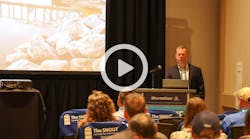
Even with an almost-normal year of rain, some states are still experiencing drought and will be for the foreseeable future. Runoff from snowmelt in California’s Sierra Mountains is less than expected. And although the state has somewhat relaxed its restrictions on water use, conservation is still critical.
This blog from the Arizona Municipal Water Users Association points out that because of ever-improving conservation practices, water recycling, and improved infrastructure, municipal water use in Arizona is about the same as it was in 1957 despite a nearly sixfold growth in population. In fact, the city of Phoenix uses about 17 billion gallons a year less than it did in 2007. California, too, has greatly reduced its municipal water consumption. The AMWUA blog also notes, however, that 74% of Arizona’s water goes to agriculture and the rest to the municipal water supply for both residential and industrial users. (The main point of the post is an explanation of why a new bottled-water plant in Phoenix makes more sense than it might seem to at first glance.)
So what about agricultural water use? An article from The Economist reports on a “smart farming” method that takes advantage of technology to limit water use without reducing crop yield. In California—where, as often reported, growing a single almond requires about a gallon of water—farmers are experimenting with wireless sensors that measure soil moisture and a network that uses the data to control the irrigation system, delivering only the water—and sometimes the dosage of fertilizer—that’s needed, and no more. The system even alternates where the water is delivered—first to one side of the tree trunk, then to the other—to boost the trees’ water uptake. One almond farmer in the Central Valley reports a 20% water savings with the new system. The technology works not only for water-intensive crops, like nuts, but also for row crops like soybeans and corn.
Have you had experience with this sort of smart irrigation system for any sort of crops (or even with the other technologies mentioned in the article, such as genome editing—a subject for another blog, perhaps)?
About the Author
Janice Kaspersen
Janice Kaspersen is the former editor of Erosion Control and Stormwater magazines.

